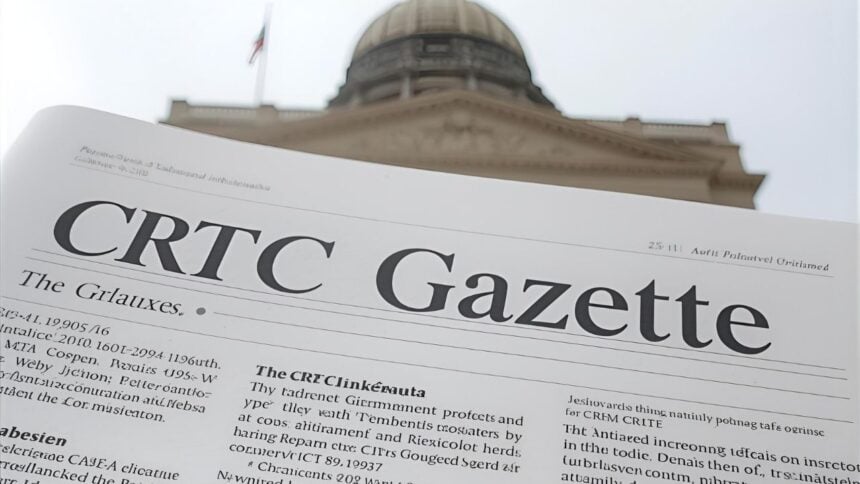Canada’s communications regulator has posted new administrative decisions in the Canada Gazette, the federal government’s official record of statutes, notices, and rulings.
The October 4 Part I issue lists an administrative entry for Pattison Media Ltd. tied to CHNW-FM in Winnipeg, dated September 22, 2025.
The Gazette serves as the formal public notice, with the CRTC directing readers to its website for underlying documents.
The CRTC section in the same issue also indexes other recent decisions.
Among them is Broadcasting Decision 2025-243 for the Canadian Broadcasting Corporation concerning CBTE-FM in Kelowna and Crawford Bay, British Columbia, published September 17.
The Gazette notes the decision details and publication date, while the full text resides on the Commission’s site.
The Gazette’s role is procedural but important, as seen in other notices such as Ontario posts new tax sale in Gazette. Each weekly Part I edition functions as a ledger of official activity across federal departments and tribunals.
For the CRTC, these entries confirm that determinations have been made and provide an auditable trail for market participants, advocacy groups, and listeners who track licensee changes and technical adjustments.
The Commission emphasizes in the Gazette that the published items are abridged versions and that original decisions, notices, and orders are posted as they are issued on the CRTC website.
The administrative decision involving Pattison Media is listed by applicant name, call sign, city, province, and date. The Gazette does not describe the substance of the decision, which is typical for this section.
That level of brevity means investors and industry planners still need to consult the Commission’s online record to understand the operational impact, whether on coverage contours, facilities, or other station-specific parameters.
The CBC decision flagged in the Gazette offers a reminder that routine technical amendments are a steady feature of the Canadian broadcasting landscape. These changes rarely move markets on their own.
They do, however, signal where incumbents are investing time and resources to keep facilities aligned with demand and regulation.
In an environment where policy shifts around online news, streaming contributions, and wholesale broadband access draw headlines, the hum of day-to-day licensing remains a key part of how Canadian media systems function.
The Gazette provides the official snapshot at a point in time. Cross-referencing both is the surest way to verify dates, docket numbers, and scope.
The latest issue confirms the Pattison Media administrative entry for CHNW-FM in Winnipeg and points to the CBC’s CBTE-FM decision, anchoring both items in the federal record, alongside other formal notices such as Notice reminds of private bill rules under Standing Order 130.
The latest issue confirms the Pattison Media administrative entry for CHNW-FM in Winnipeg and points to the CBC’s CBTE-FM decision, anchoring both items in the federal record.



















